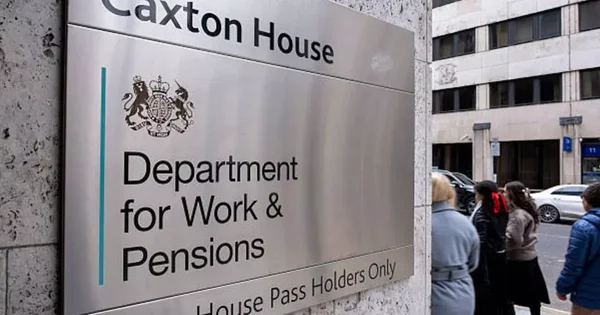To the point
Stamp duty changes have shaken up the property tax world for UK homebuyers. Whether you’re buying your first home or adding to your property portfolio, these updates could save you money or cost you more.
Understanding how stamp duty changes affect property purchases is essential, as being aware of the latest rules can significantly impact your buying decisions and the overall cost of acquiring a property.
The thresholds, rates and exemptions keep shifting, making it crucial to stay on top of the latest rules. Getting it right can mean thousands of pounds difference in your final bill.
Our Pie.tax app includes a handy stamp duty calculator that gives you instant figures based on your purchase. Or if you’re just here to get to grips with it all, let’s break it down!
What's Changed with Stamp Duty Recently?
The government has adjusted stamp duty land tax (SDLT) thresholds several times in recent years. Currently, no tax is due on the first £250,000 for most buyers in England and Northern Ireland.
Stamp duty thresholds changed recently, leading to a significant impact on buyers many saw reduced upfront costs, but the market also experienced a slowdown in transactions after the adjustments.
First-time buyers get an even better deal, with no stamp duty on purchases up to £425,000. This is a significant saving compared to previous years.
Stamp duty applies to most property transactions in England and Northern Ireland, except for certain transfers such as gifts between spouses or properties below the minimum threshold. If you’re buying an additional property such as a buy-to-let, holiday home, or any property beyond your main residence you’ll pay an extra 3% surcharge on top of standard rates. This surcharge applies to the entire purchase price, not just portions above thresholds. Buyers must pay stamp duty within 14 days of completion, usually through their solicitor or conveyancer, who will handle the process and submit the payment to HMRC.
Scotland and Wales have their own systems (LBTT and LTT), with different thresholds and rates from England’s SDLT. Make sure you’re looking at the right tax for your location!

How First-Time Buyers Benefit
If you've never owned property before, you qualify for first-time buyer relief. This means no stamp duty on the first £425,000 of your purchase price.
For homes costing between £425,000 and £625,000, you'll pay 5% on the portion above £425,000. Buy a home over £625,000, and you lose the relief entirely.
Be careful if you're buying with someone else. If your partner has owned before, you won't get the full relief.
The rules count you as a first-time buyer only if neither of you has ever owned property. Some people forget that owning property anywhere in the world counts.
Even if you inherited a small share of a relative's home years ago, you might not qualify as a first-timer. I learned this the hard way when my wife's name on a family cottage cost us our relief.
Investment Properties Cost More
Buy a second home or investment property and you’ll pay an extra 3% on top of normal rates. The amount of stamp duty owed can also depend on the property worth, especially for high-value properties. This makes a big difference to your tax bill.
For example, a £300,000 second home would attract £14,000 in stamp duty, compared to just £2,500 if it were your main residence. Inherited properties may have inheritance tax implications in addition to stamp duty.
If you’re replacing your main home, you might pay the higher rate initially but can claim a refund. You have 36 months to sell your previous main home and claim back the extra 3%. When selling an investment property, private residence relief does not apply, so capital gains tax may be due. Basic rate taxpayers pay a lower capital gains tax rate (18%) on property sales compared to higher rate taxpayers.
Non-UK residents face an additional 2% surcharge on top of all other rates. This means overseas investors could pay up to 17% stamp duty on portions of high-value properties. Varying rates may apply depending on the type of buyer and the value of the property.

Commercial Property Has Different Rules
Commercial property has its own stamp duty thresholds and rates. No tax is due on the first £150,000, with 2% on the next £100,000, and 5% on anything above £250,000.
Mixed-use properties (part residential, part commercial) can sometimes offer tax advantages. They're taxed under the commercial rates, which can be lower for higher-value properties.
Leasehold transactions have complex calculations based on both the purchase price and the annual rent. The tax is calculated on the "net present value" of the rent over the lease term.
Various reliefs exist for business purchases, including for certain company reconstructions. Transfers between group companies may also qualify for relief in specific circumstances.
Main Residences and Tax Implications
The landscape of property taxes in the UK could be set for a radical overhaul, with significant implications for main residences and their owners. Under the current system, stamp duty land tax is paid when you buy a property, with stamp duty rates and thresholds depending on the purchase price and your status as a first-time buyer or home mover.
However, recent proposals suggest a shift towards a new national property tax, which would be based on the property’s value rather than the price paid at purchase.
For owner-occupiers, this means that instead of paying stamp duty just once when you buy, you could face an ongoing property tax, with rates set by central government. This new property tax would apply to all main residences, and properties worth over £1.5 million could see even higher tax bills, especially for higher rate taxpayers.
Whether you’re a first time buyer, a home mover, or an existing owner, staying informed about proposed changes to stamp duty land tax, council tax reform, and the introduction of new property taxes is essential. Planning ahead and seeking professional advice can help you navigate the evolving landscape and make the most of any reliefs or exemptions available.

What's Coming Next?
No major stamp duty changes have been announced for the immediate future. However, the tax landscape often shifts with budget announcements. Significant changes to stamp duty rates and thresholds are scheduled for April 2025.
Some political parties have suggested replacing stamp duty with different property taxes, including proposals to replace stamp duty with a new property tax based on property values. These new property taxes could be calculated using current property values rather than historical purchase prices.
Market analysts suggest that any dramatic changes would be introduced gradually. HM Revenue & Customs currently collects significant revenue from stamp duty, and this could change under new proposals.
Some proposals aim to raise the same amount of revenue as current stamp duty collections, while also seeking to raise revenue without increasing income tax or national insurance. National insurance is another major source of government revenue considered in fiscal policy discussions.
Final Thoughts
Stamp duty can add a chunky sum to your property purchase. Staying up to date with current rates could save you thousands.
The different rules for first-time buyers, home movers, and investors make it worth checking exactly what applies to your situation.
If in doubt, get professional advice before completing your purchase. The right guidance could reveal reliefs you didn't know about.

Pie tax: Simplifying Stamp Duty Calculations
Working out stamp duty doesn't need to give you a headache. The UK's first personal tax app makes calculating your exact liability simple with just a few taps.
Pie tax helps you spot all the reliefs you qualify for, potentially saving you thousands on your property purchase. We safely store your property tax history too, making future reference easy.
The app walks you through the whole process from initial calculations to completing your SDLT return. Everything is tailored to your specific situation.
You'll feel confident knowing exactly what you owe and why, with clear explanations in plain English. Fancy seeing how it works? Take a look at Pie tax to discover how we can make your property tax journey smoother.









